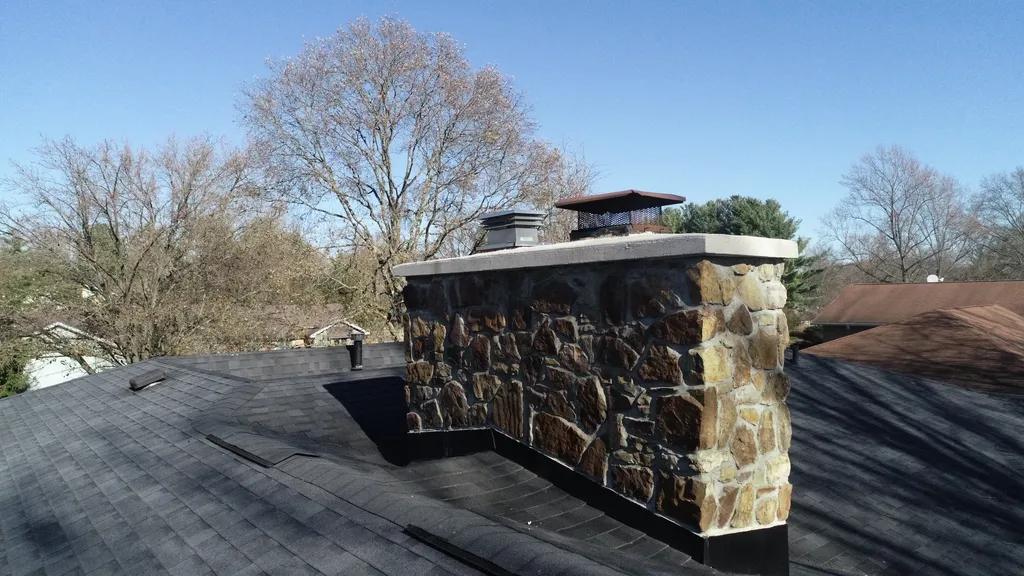In the world of chimney maintenance and repair, understanding damaged flues is crucial for ensuring the safety and efficiency of your fireplace or heating system. From identifying common causes of flue damage to exploring effective solutions, having a comprehensive knowledge of this key component is essential for homeowners and professionals alike. Join us as we dive into the causes and solutions of damaged flues, providing you with the information needed to make informed decisions and protect your home.
Table of Contents
- Common Causes of Damaged Flues
- Signs of Flue Damage to Look Out For
- Effective Solutions for Repairing Damaged Flues
- Preventative Measures to Avoid Flue Damage
- Q&A
- In Summary

Common Causes of Damaged Flues
When it comes to damaged flues, there are several common causes that homeowners should be aware of. Understanding these causes can help you prevent potential issues and keep your flue working properly. Some of the most frequent causes of damaged flues include:
- Poor chimney maintenance
- Creosote buildup
- Cracks in the flue lining
- Water damage
- Animal intrusion
It is essential to address these issues promptly to avoid more significant problems down the line. By taking proactive steps to maintain your chimney and flue, you can ensure the safety and efficiency of your fireplace or heating system.

Signs of Flue Damage to Look Out For
It is important to be vigilant when it comes to detecting signs of flue damage in your home. One common telltale sign is a buildup of creosote, a black, sticky residue that accumulates on the walls of the flue. This can lead to blockages and potentially hazardous conditions. Another indicator of flue damage is a strong odor coming from your fireplace, which could signify a blockage or ventilation issue.
Additionally, if you notice cracking or deterioration in the masonry surrounding your flue, this could indicate structural damage that needs immediate attention. It is crucial to address any flue damage promptly to ensure the safety of your home and family. Be sure to consult with a professional chimney sweep or contractor to assess and repair any issues with your flue.

Effective Solutions for Repairing Damaged Flues
When it comes to repairing damaged flues, it is crucial to understand the root causes of the issue before implementing solutions. Common causes of damaged flues include poor maintenance, improper installation, and exposure to extreme weather conditions. Over time, these factors can lead to cracks, leaks, and corrosion in the flue lining, compromising its integrity and efficiency.
Fortunately, there are effective solutions available to repair damaged flues and restore their functionality. Some of the most common methods include relining the flue, repairing any cracks or leaks, and reinforcing the structure to prevent future damage. It is important to consult with a professional chimney technician to assess the extent of the damage and determine the best course of action for repairs.

Preventative Measures to Avoid Flue Damage
Flue damage can be caused by a variety of factors, but understanding the root causes can help prevent potential issues. One common cause of damaged flues is the buildup of creosote, a sticky residue that forms when wood or fossil fuels are burned. Regular chimney cleanings can help remove creosote buildup and prevent damage to the flue. Another factor to consider is water intrusion, which can lead to rust and corrosion of the flue lining. Installing a chimney cap can help prevent water from entering the flue and causing damage.
Additionally, structural issues such as cracks or leaks in the flue can also contribute to damage over time. It’s important to have your chimney inspected regularly by a professional to identify any potential issues and address them promptly. By taking preventative measures such as regular cleanings, installing a chimney cap, and addressing structural issues, you can help avoid costly repairs and keep your flue in good condition for years to come.
Q&A
Q: What are the common causes of damaged flues in chimneys?
A: Common causes of damaged flues include water penetration, corrosion, creosote buildup, and physical damage from animals or debris.
Q: How does water penetration affect flue functionality?
A: Water penetration can cause damage to the flue liner, leading to cracks, deterioration, and potential structural issues. It can also create the conditions for mold growth and decreased efficiency of the chimney.
Q: What are the signs that a flue may be damaged?
A: Signs of a damaged flue include visible cracks or gaps in the flue liner, water stains on the chimney walls, rust or discoloration on the chimney cap, draft issues, and strange odors coming from the chimney.
Q: What are some solutions to repair damaged flues?
A: Solutions to repair damaged flues may include relining the chimney with a new flue liner, patching any cracks or gaps, waterproofing the chimney, installing a chimney cap, and regular maintenance to prevent future damage.
Q: How important is it to address damaged flues promptly?
A: It is crucial to address damaged flues promptly to prevent further damage to the chimney and to ensure the safety and efficiency of the fireplace or heating system. Ignoring damaged flues can lead to costly repairs and potential safety hazards.
In Summary
In conclusion, understanding the causes and solutions of damaged flues is essential for maintaining the safety and functionality of your chimney or fireplace. By being aware of common issues such as cracks, blockages, and corrosion, you can take the necessary steps to prevent further damage and ensure proper ventilation. Regular inspections and maintenance by qualified professionals are key to keeping your flue in good working condition. Remember, a well-maintained flue not only protects your home from potential hazards but also prolongs the life of your heating system. Stay informed and proactive to enjoy a warm and safe environment for years to come.


